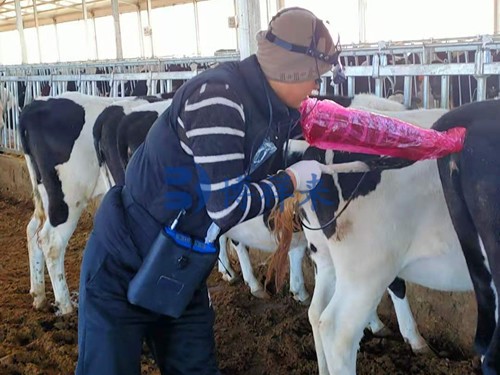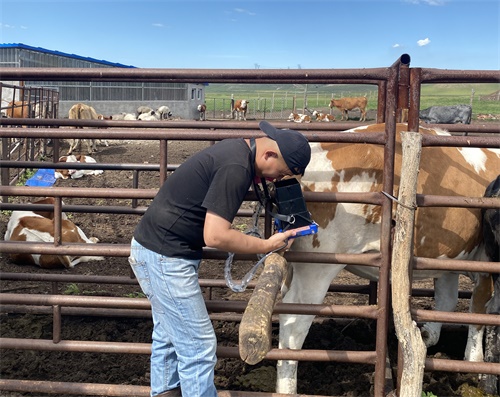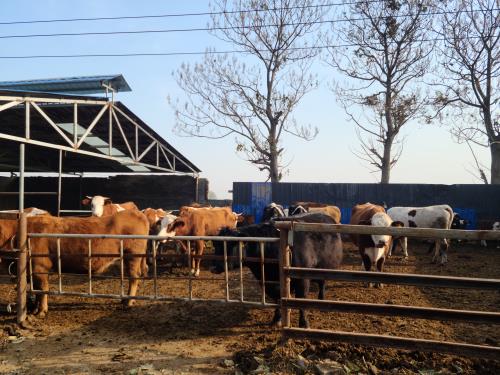In today’s modern livestock industry, large-scale farms face an ongoing challenge: how to optimize reproduction management while minimizing labor costs. As herds grow larger, manual pregnancy checks, visual observation of signs, and traditional palpation methods become increasingly labor-intensive, error-prone, and time-consuming. Fortunately, technological advances have provided a solution: ultrasound pregnancy tools. These devices are transforming how reproductive monitoring is performed, significantly reducing labor demands while enhancing accuracy and profitability. In this article, I’ll explore how ultrasound pregnancy tools are being used on large-scale farms, why they are so effective, and how they contribute to reducing labor costs in real-world operations.
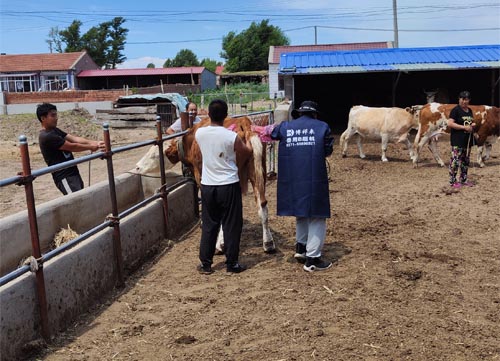
The Challenges of Pregnancy Detection on Large-Scale Farms
Pregnancy detection is a critical management task on any livestock farm. Early, accurate pregnancy diagnosis enables farmers to:
Identify open (non-pregnant) animals for rebreeding
Optimize feeding programs
Manage herd inventory efficiently
Prevent prolonged open periods that reduce profitability
On large-scale operations with hundreds or thousands of animals, conventional methods like rectal palpation or observing behavioral estrus signs require extensive manpower and skilled technicians. Moreover, mistakes can lead to costly delays in rebreeding and nutritional mismanagement.
In many countries, including the United States, Canada, Australia, and parts of Europe, labor availability for these specialized tasks is increasingly scarce. Experienced veterinary technicians are costly, and training new staff requires time and investment. The result is a growing need for methods that can reduce dependence on human labor without sacrificing accuracy.
How Ultrasound Pregnancy Tools Work
Ultrasound pregnancy tools use high-frequency sound waves to create real-time images of reproductive organs. Unlike traditional palpation, which relies on tactile skill and subjective interpretation, ultrasound provides a visual confirmation of pregnancy status. In B-mode (brightness mode) ultrasound, images display developing embryos, uterine fluid, and fetal heartbeat as early as 25 to 30 days into gestation for cattle and even earlier for some smaller species.
More advanced models offer Doppler functionality, which allows farmers to assess blood flow in the uterus and placenta, providing even more data about fetal health and pregnancy viability.
Because these devices are non-invasive, portable, and deliver immediate results, they are ideal for rapid, large-scale screening. A technician can quickly move from animal to animal, confirming pregnancies in minutes, and dramatically reducing the time and labor needed for herd-wide checks.
Labor Efficiency: A Game-Changer for Large-Scale Operations
On my farm, managing 800 dairy cows, labor costs used to be one of our biggest reproductive management expenses. It took several employees, over multiple days, to complete pregnancy checks using manual palpation. The introduction of ultrasound pregnancy tools changed everything.
With just one trained operator and a high-quality portable ultrasound scanner, I can now check 150 to 200 cows in a single morning. This level of efficiency translates directly into labor savings. Instead of tying up several employees for days, we now accomplish the task with one person in a few hours. That freed-up labor can be reallocated to other farm duties, improving overall productivity.
This experience is not unique. Large-scale farms in the U.S. Midwest, Australian dairy hubs, and European beef operations report similar results. As described by Dr. Charles R. Short of Iowa State University: “The real-time visualization provided by ultrasound allows for faster, more confident pregnancy diagnoses, and greatly reduces the hands-on labor hours required for each herd.” (Short, 2021)
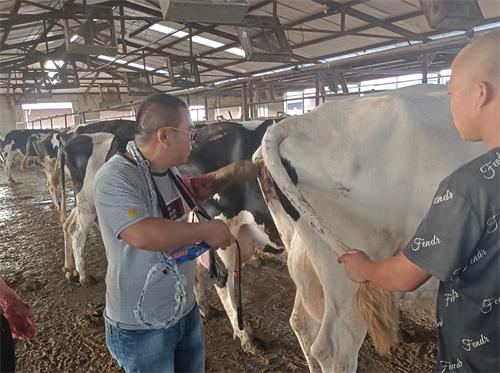
Reduced Labor, Increased Accuracy
One of the most important benefits of ultrasound technology is that it improves both labor efficiency and diagnostic accuracy simultaneously. Unlike palpation, which relies heavily on the skill of the technician, ultrasound images provide objective visual confirmation. This reduces false positives and missed pregnancies, which are costly errors on a large farm.
Accurate pregnancy detection means open animals are identified earlier and re-bred sooner. This shortens calving intervals, increases annual production, and improves the overall reproductive efficiency of the herd. The net effect is not only reduced labor costs but also higher revenue due to more consistent and predictable animal production cycles.
Early Pregnancy Detection Prevents Labor Waste
The earlier pregnancy can be detected, the sooner management decisions can be made. For example:
Open cows can be separated and re-bred immediately.
Pregnant animals can receive tailored nutrition programs to support gestation.
Animals carrying twins or at risk for complications can be identified early and monitored.
All of these decisions reduce wasted labor. Without ultrasound, open animals might be unknowingly carried for months before the absence of pregnancy becomes obvious, wasting feed, space, and staff attention. Early detection prevents these hidden labor costs.
In some U.S. dairy herds, ultrasound pregnancy detection has allowed herds to reduce their average “days open” by more than 20 days, which directly increases profitability (Fricke, 2023).
Technological Simplicity Reduces Training Labor
Training staff to conduct manual palpation takes months, if not years, to master confidently. In contrast, modern ultrasound devices are designed to be user-friendly. Portable veterinary ultrasound units such as the BXL-V50 feature high-resolution screens, real-time imaging, preset scanning modes for different species, and intuitive interfaces that allow even moderately trained operators to perform pregnancy scans after just a few days of training.
On large farms where high staff turnover is common, this simplicity is a major advantage. Farms no longer need to rely solely on expensive, highly trained veterinarians or technicians. Instead, in-house staff can be cross-trained to handle ultrasound scans competently, further reducing labor costs.
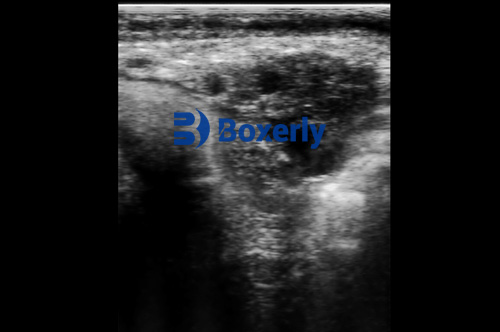
Ultrasound Tools Fit a Wide Range of Livestock
One reason ultrasound pregnancy tools are so widely adopted globally is their versatility. They are effective across many species:
Dairy and beef cattle
Pigs (sows and gilts)
Sheep and goats
Horses
Large-scale pig farms, for instance, rely heavily on ultrasound pregnancy scanning because early detection (as early as 18 to 21 days post-insemination) allows rapid identification of non-pregnant sows. This minimizes non-productive sow days—a major source of financial loss in commercial pig production (Morrow et al., 2020).
Similarly, in Australian sheep stations with thousands of ewes, ultrasound scanning is now a standard part of flock management, allowing rapid sorting into single, twin, or open groups, which directly guides nutritional management and reduces unnecessary labor associated with blanket feeding programs.
Portable Ultrasound Units: Perfect for Large-Scale Mobility
Modern portable ultrasound units have dramatically improved field usability. Devices like the BXL-V50 feature:
Lightweight, waterproof, and dustproof designs
Battery life exceeding 7 hours of continuous use
Large HD screens for easy image interpretation in daylight
Durable construction suitable for rugged farm environments
On large operations, technicians can move freely across barns, paddocks, or pens without the need for power cords or cumbersome equipment. This portability is key for covering large animal populations efficiently.
The Economic Multiplier Effect
When ultrasound pregnancy tools reduce labor needs, they indirectly create additional financial benefits:
Lower overtime costs during breeding season peaks
Less wear and tear on staff, improving retention and reducing turnover
Greater flexibility to handle other farm tasks concurrently
Better data for breeding programs, improving genetic selection long-term
One study conducted on commercial dairies in Wisconsin showed that introducing portable ultrasound pregnancy detection cut overall reproduction-related labor costs by 35%, while simultaneously increasing pregnancy diagnosis accuracy by over 20% (Fricke et al., 2023). These are not minor improvements; they represent substantial, recurring cost savings year after year.

International Adoption: A Growing Global Trend
In countries like New Zealand, Denmark, and Brazil—where labor regulations are strict or labor is expensive—ultrasound pregnancy tools have been rapidly embraced as a way to meet productivity goals without increasing workforce size. The same is true across major beef-producing regions of the United States, where large herds can no longer be managed cost-effectively with manual methods alone.
This global adoption reflects a broader trend toward precision livestock farming, where data-driven technologies reduce reliance on traditional labor models and enable more efficient, sustainable production.
Beyond Labor Savings: Animal Welfare and Biosecurity
Ultrasound tools are not only labor savers—they also contribute to improved animal welfare and biosecurity. Because the procedure is non-invasive, animals experience less stress compared to repeated rectal exams or visual estrus checks. Less stress improves reproductive performance and minimizes the risk of handling injuries to both animals and workers.
Furthermore, in a post-pandemic world where biosecurity is paramount, minimizing human-animal contact while maintaining accurate reproductive monitoring reduces the potential transmission of zoonotic diseases between workers and livestock.
Conclusion
For large-scale livestock farms, ultrasound pregnancy tools have become indispensable not only for their diagnostic accuracy but also for their powerful ability to reduce labor costs. The combination of early, non-invasive pregnancy detection, user-friendly technology, and portable design allows these farms to perform large-scale reproductive management with fewer staff, less specialized labor, and far greater efficiency.
As the livestock industry continues to embrace precision farming principles, ultrasound pregnancy tools represent a practical, proven technology that improves profitability while promoting better animal welfare and resource use. For large-scale producers facing rising labor costs and growing herd sizes, ultrasound is no longer a luxury—it is a necessity.
Reference Sources:
Short, C. R. (2021). "Efficiency of Real-Time Ultrasound in Livestock Pregnancy Diagnosis." Journal of Veterinary Practice.
Fricke, P. M. (2023). "Economic Impact of Early Pregnancy Diagnosis Using Ultrasound on Commercial Dairy Farms." Journal of Dairy Science, 106(3), 2201–2212. https://doi.org/10.3168/jds.2022-22099
Morrow, D. A., et al. (2020). "Application of Ultrasound Technology in Modern Swine Production Systems." Swine Health and Production Journal, 28(1), 15–22.
Beef Cattle Institute. (2023). “Use of Ultrasound for Growth Evaluation in Cattle.” https://www.beefcattleinstitute.org/ultrasound-growth

